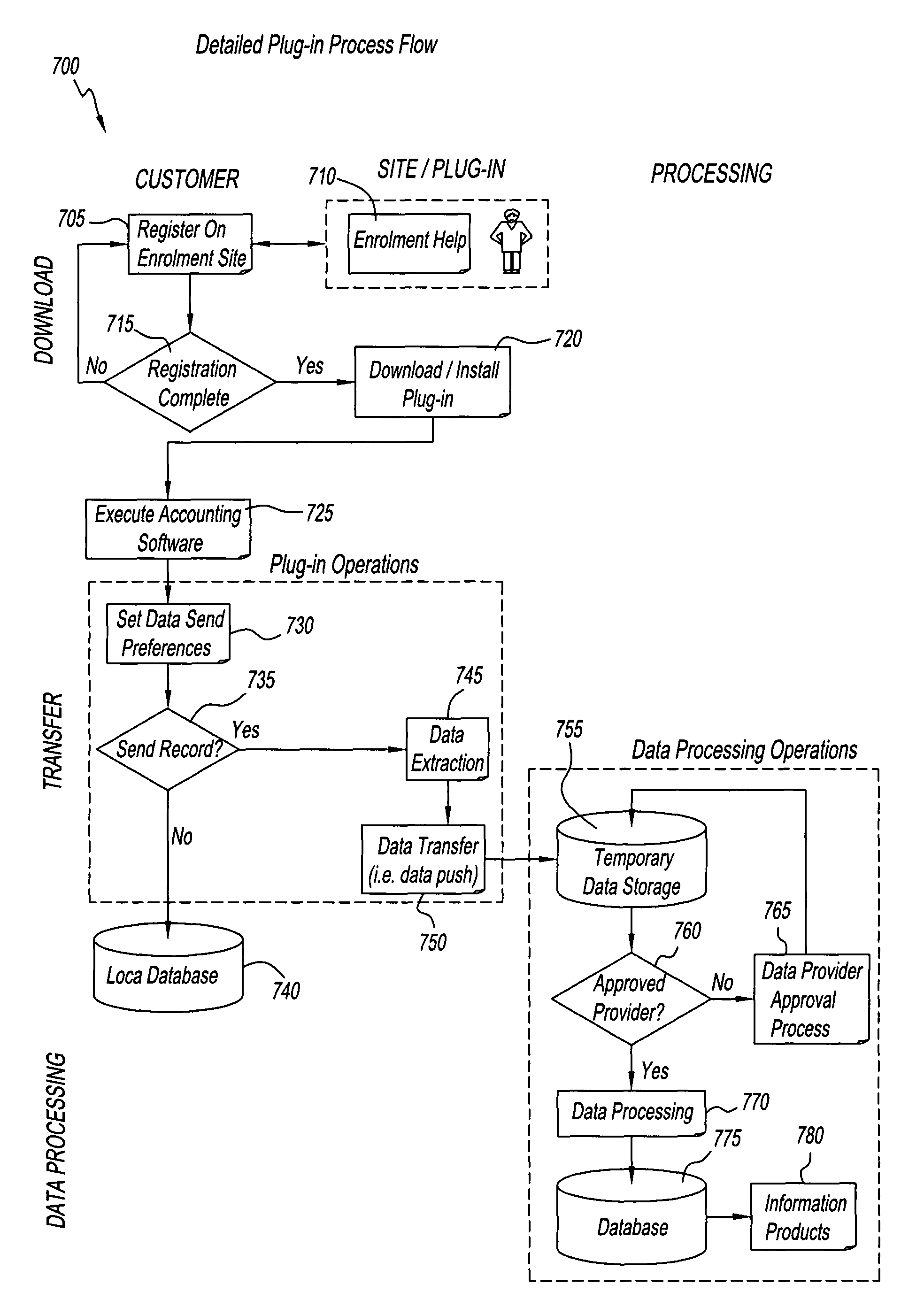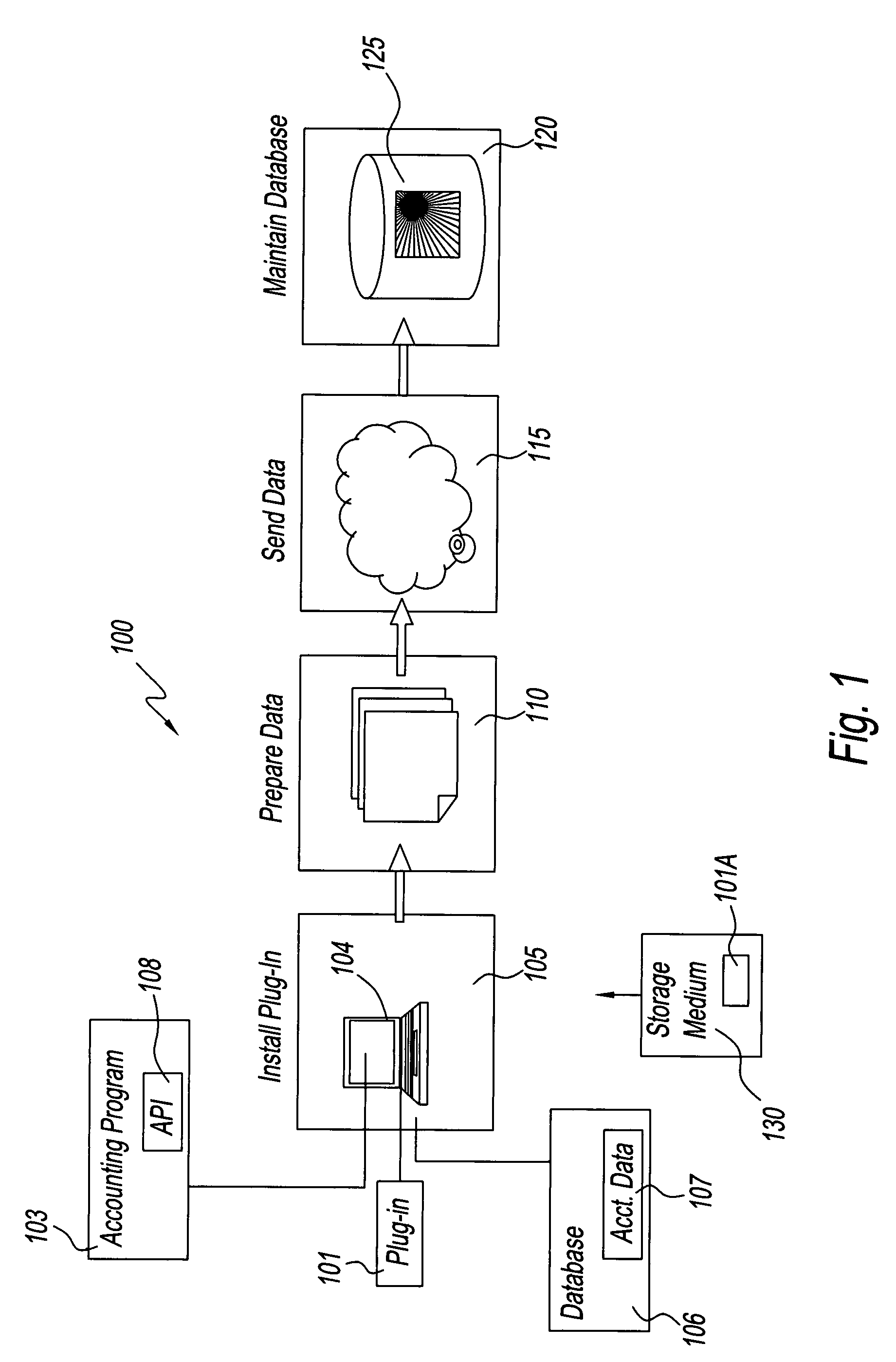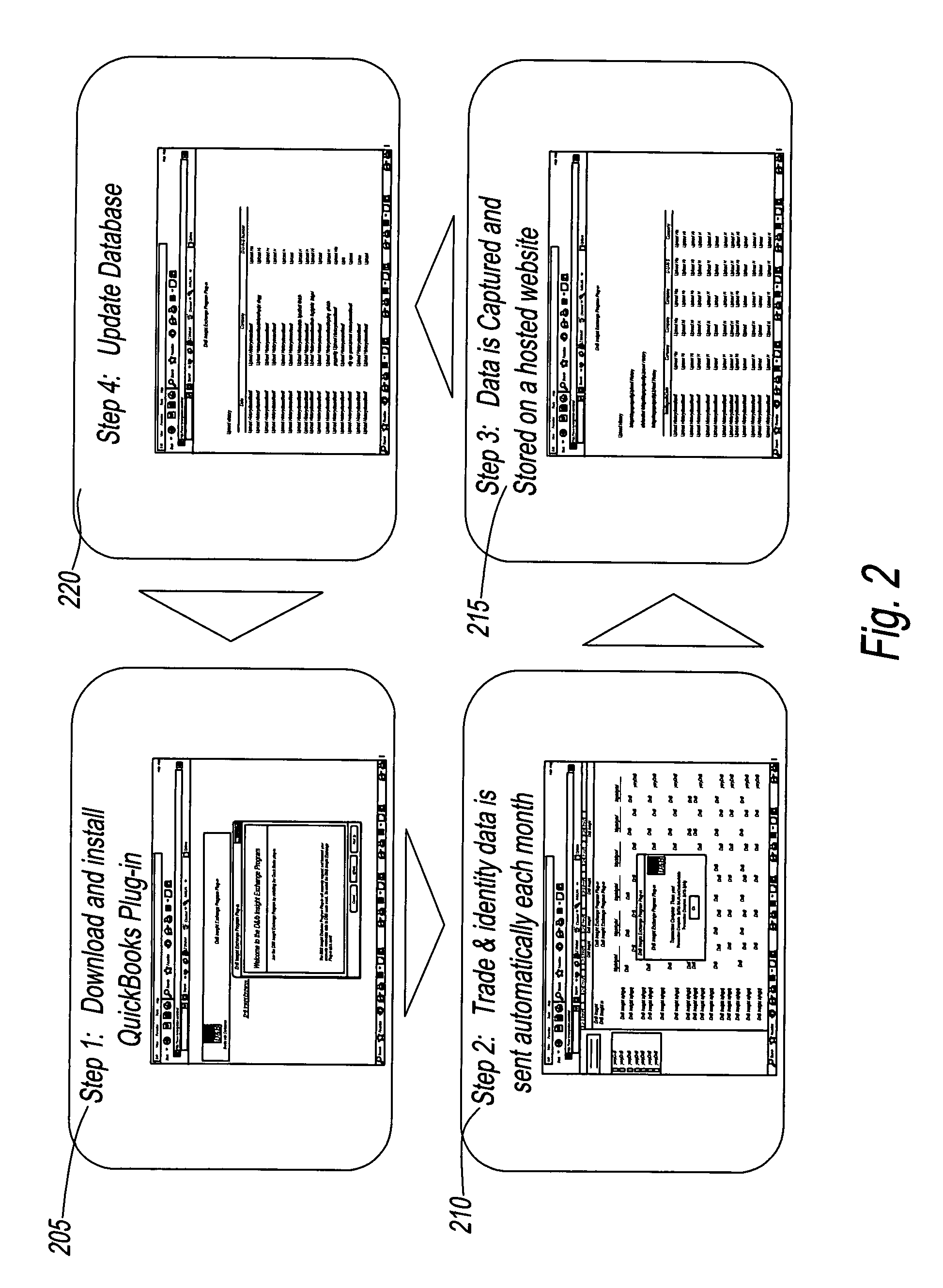Process and system for automated collection of business information from a business entity's accounting system
a business entity and accounting system technology, applied in the field of process and system for automated collection of business information from business entity accounting system, can solve the problems of chain reaction, adversely affecting business partners, and companies and directory providers currently using software applications
- Summary
- Abstract
- Description
- Claims
- Application Information
AI Technical Summary
Benefits of technology
Problems solved by technology
Method used
Image
Examples
Embodiment Construction
[0024]FIG. 1 is a block diagram of a process 100. A system employing process 100 includes a processor, i.e., a computer 104, having an associated memory with an accounting program 103 installed therein. Computer 104 is coupled to a database 106, and also coupled, via a communications link, to a database 125. Database 106 has accounting data 107 residing therein. Computer 104 maintains accounting data 107 by executing instructions that are embodied in accounting program 103. Accounting data 107 may include, for example, business performance information, accounts receivable data, and trade information. The accounts receivable data may, in turn, also include accounts receivable aging data.
[0025]Database 106 is maintained by a first business entity, e.g., a business that produced accounting data 107, and database 125 is maintained by a second business entity, e.g., a credit company that evaluates accounting data 107 to prepare a report for a creditor of the first business entity. Altern...
PUM
 Login to View More
Login to View More Abstract
Description
Claims
Application Information
 Login to View More
Login to View More - R&D
- Intellectual Property
- Life Sciences
- Materials
- Tech Scout
- Unparalleled Data Quality
- Higher Quality Content
- 60% Fewer Hallucinations
Browse by: Latest US Patents, China's latest patents, Technical Efficacy Thesaurus, Application Domain, Technology Topic, Popular Technical Reports.
© 2025 PatSnap. All rights reserved.Legal|Privacy policy|Modern Slavery Act Transparency Statement|Sitemap|About US| Contact US: help@patsnap.com



